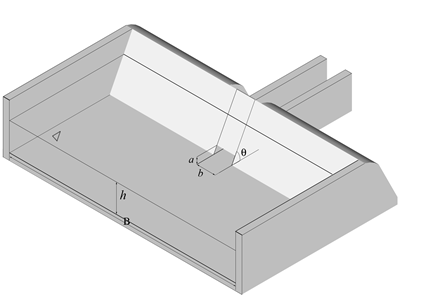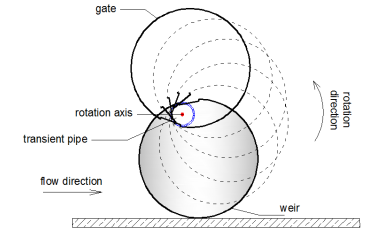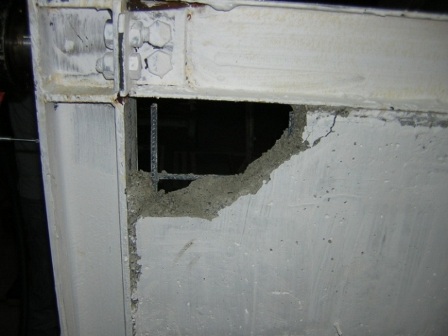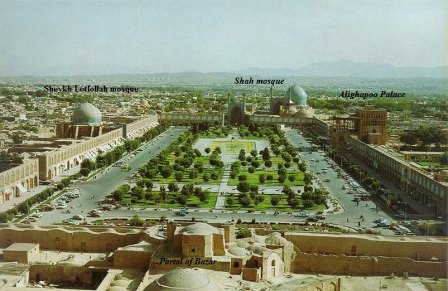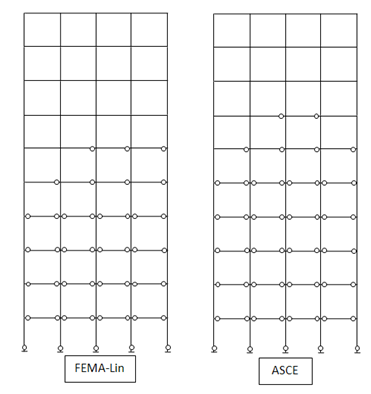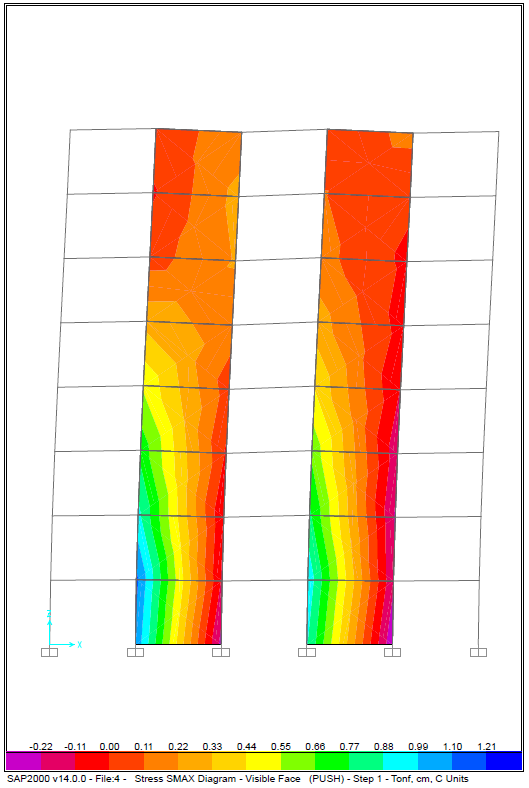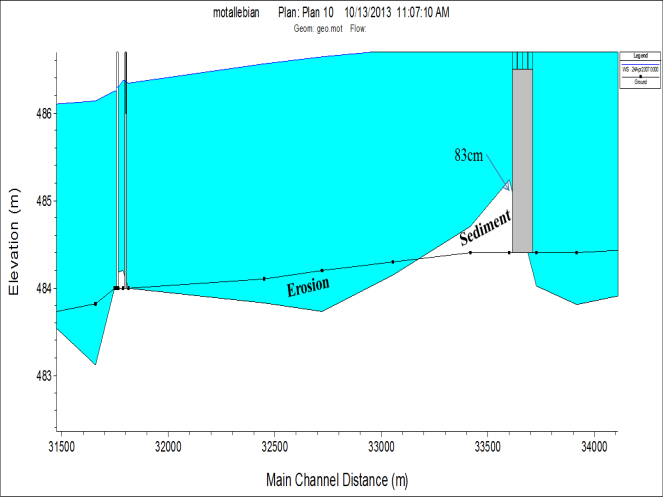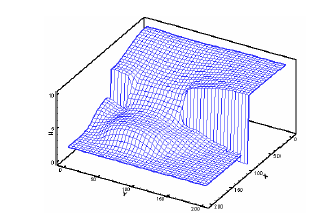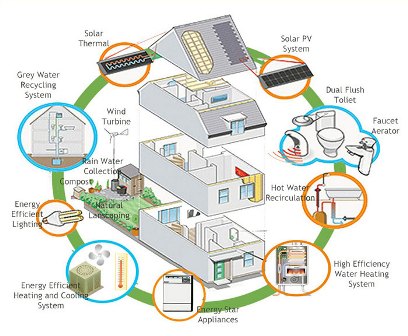Volume 4 : Issue 5, September 2014
Table of Content, 25 September 2014
|
Publisher Item Identifier (pii) / Research Title / |
Article Information / |
Download |
|
pii: S225204301400074-4 Long Term Dry and Wet Effects on the Engineering Behavior of Subgrade Soil with High Amount of Soluble Salts using Low Cost Stabilizers |
Original Article, D74 ABSTRACT: The performance of pavements depends upon the quality of subgrades. A stable subgrade and properly draining pavement help to produce a long-lasting pavement. Subgrade soil provides support to the remainder of the pavement system. This study is performed to evaluate the effect of total soluble salts (T.S.S.) on the strength of subgrade soil brought from Al-Mahmodia city south of Baghdad. Chemical and physical test, carried out on the soil sample, indicate that, the soil is lean clay of (CL) group according to the Unified Soil Classification System (U.S.C.S.). The soil sample contains about (15.685%) by weight of (T.S.S.) content. Different stabilizers are added to the subgrade soil to study the influence of these stabilizers on (T.S.S.) and the strength of subgrade, the stabilizers are (5% lime, 2.5% calcium chloride, 6% kaolin, 6% Rice Husk Ash and 5% saw dust). California Bearing Ratio (CBR) test is determined for the natural soil and different stabilizers with different number of blow per layer (10, 25 and 56) for (4-days) soaking periods under (10 Ibs.) surcharge load. The number of blow per layer and (CBR) value, required to achieve (95%) relative modified proctor compaction are determined from the results of different number of blow (10, 25 and 56) and soaked for (4-days). The (CBR) value of the natural soil at 95% relative modified proctor increases by about (48%, 66.1%, 36.1% and 38%) for the (2.5% CaCl2, 5% lime, 6% RHA, 6% kaolin) respectively. While the CBR value of soil with the (5% saw dust) decreases to (29%). The (T.S.S) is reduced after the addition of the different stabilizers. Durability test (long term soaking) for the subgrade stabilized with (6% RHA) and compacted at 95% relative modified proctor is conducted, the results of soaking showed reduction in both (CBR) value and (T.S.S) with the time. |
|
|
pii: S225204301400075-4 3-D Underflow of a Sluice Gate at a Channel Inlet; Experimental Results and CFD Simulations |
Original Article, D75 ABSTRACT: The underflow of a sluice gate is well known when the gate is set into a channel of the same width (2-D underflow), while no studies are found in the literature when the gate is flush with the wall of the tank or reservoir upstream to the channel (3-D underflow). Experimental and numerical investigations were carried out to study the flow in this case, in a small range of relative openings, considering three wall slopes, and obtaining an equation for the discharge coefficient. Afterwards, numerical simulations were performed by means of a CFD (Computational Fluid Dynamics) model, following the RANS approach and based on a finite-volume computational code. Comparison of experimental and numerical results showed that the simulations predict accurately the flow behaviour; thereafter discharge coefficients in a more extended range of relative openings were computed for use in the practice. |
|
|
pii: S225204301400076-4 The Hydraulic Investigation of Perforated-Cylindrical-Intake Structure |
Original Article, D76 ABSTRACT: Water surface level regulation and deviation of a constant value of discharge into the side channel, is the basis of the intake systems in irrigation channels, considering the main discharge rate fluctuates during the seasons. Hence, the necessity to design a structure which can control the consequences of discharge fluctuation in main channel and divert the constant value of demand water flow is more recognizable. The perforated-cylindrical-intake instrument is a new model of regulator-intake function, includes a free overflow on a cylindrical weir associated with intake element that can fulfil the main objective of a regulator and an intake devices, simultaneously. This research firstly, examined the different geometric conditions of the structure and determined the best one, then, tried to investigate the hydraulic function, operation method and the correlation of the intake discharge and upstream flow depth versus the discharge of the main channel in various condition of the structure based on an experimental work. The results show that in wide range of discharge variation in the main channel, the intake discharge variation were not considerable, also, it would be possible to measure and control the intake discharge precisely, installing a counter and a valve at the side channel. |
|
|
pii: S225204301400077-4 Experimental Study on the Seismic Behavior of Retrofitted Concrete Infill |
Original Article, D77 ABSTRACT: Nowadays, Infill is widely used in retrofitting structures. Low sensitivity to construction quality is one of the advantages of concrete infill in comparison to other methods such as the application of steel braces. On the other hand, there are some weak points in this method mainly like sudden and brittle fracture in the corner which causes serious degradation. Due to such a weak point, concrete infill could not attract researchers so much and a limited number of studies were thus conducted on them. The experimental behavior of concrete infill with a scale of 1/2 was studied under cyclic and monotonic loading. This research includes three experiments: 1- compound frame consisted of steel frame and simple concrete infill, 2- a steel frame with concrete infill included confined corner 3- the third model encompasses second model accompanied with frictional sliding fuse (FSF). Results show that a Strengthened corner delays corner fracture to a great extent but the fracture still happens and causes much degradation. A frictional sliding fuse not only delays infill fracture to a great extent but also prevent degradation after failure of the corner. The used FSF also acts as a friction damper and increases the area of the hysteresis loops of the compound frames and consequently increases energy absorption. |
|
|
pii: S225204301400078-4 Structural Elements of Urban Squares from Tradition to Modernity in Iran: A Comparative Study of Isfahan’s Naghsh-e-Jahan Square and Tehran’s Toop-khaneh Square |
Original Article, D78 ABSTRACT: Modernism, as one of the main achievements of man, has been the source of various changes in the spatial structure of cities. Among the changes, city square, as the most significant structural representative of the city, is one of the changes originating from modernism. Using library resources, this study examined the change and development of structural elements of the square from tradition to modernism. It targeted the trend of structural changes of the square by comparing the two squares of Naghsh-e-Jahan and Toop-khaneh from beginning to the present time. The findings showed that with the appearance of modernism in Iran’s cities, structural elements of the traditional square were modified, and modern elements, which fulfil the modernist needs, replaced them and were made in the body of the square. The present study compared the two case squares. It is concluded that the continued growth of modernism lead to changes, not only in the structure of the modern urban square, but also in the essence of the square. In case in the design of urban squares enough consideration is granted for human criteria as well as restrictions in access to transportation vehicles, urban space of squares can be revitalized, and defects in modernist modifications of squares can be decreased. |
|
|
pii: S225204301400079-4 Evaluation of Nonlinear Static Analysis for Special Moment Resisting Frames |
Original Article, D79 ABSTRACT: In order to prevent extensive devastation and death toll in strong earthquakes, rehabilitation of existing structures was emphasized and after the publication of prestandards such as FEMA 274, ATC 40, FEMA 356, ATC 55, it was time for the code ASCE 41-06 to be published. In FEMA and ASCE 41, nonlinear static analysis method is considered a common approach to assess seismic behavior of structures. Considering widespread acceptance of this method (nonlinear static analysis) the question is put forward to what extent the results obtained from this approximate method are reliable. To answer this question, seven models of special steel moment resisting frames designed according to ASCE 7-05 and AISC 360- 05 and AISC 341-05 were analysed using nonlinear static and dynamic analyses based on FEMA 356 and ASCE 41-06 provisions. Comparing the results obtained from nonlinear static and dynamic analyses gives good results for low-rise buildings. In addition, it results in conservative estimates implying that this method should be considered more carefully when used for taller buildings. |
|
|
pii: S225204301400080-4 Comparison of Average Strength Steel Moment Frame with a Thin Plate Steel Shear Wall and Diverging Braced Design Method Based on Performance Levels |
Original Article, D80 ABSTRACT: In this paper a comparison was done between the coefficient of behaviour of steel moment frame systems with thin steel shear wall and diverging braced design method based on performance levels. 20 different frames was used for modelling and numerical analysis by SAP2000 software to calculating the capacity curve, coefficient of behaviour, energy dissipation and point of performance using the spectral capacity. For analysis, loading, determination of joints, levels of performance and etc. of frames, UBC, ATC-4, FEMA 356, Iranian 2800, Iran’s 519 code of practice was used. In general, it can be concluded from this modelling that shear wall systems have much higher energy absorbance capacity but lower ductility than the divergent braced systems in all short, medium, and long buildings. The studies conducted on spectral capacity diagrams shown that the steel shear walls had better performance than divergent braced walls. |
|
|
pii: S225204301400081-4 The Impact of Niatak Lateral Spillway Performance on Process of Erosion and Sedimentation of Sistan River of Iran |
Original Article, D81 ABSTRACT: Sistan River Being located on the tail water of Helmand’s very extensive basin, it is prone to deposition of fine sediments, particularly in times of flood. The diversion structures on this river are Zahak and Sistan Dams. In this research the HEC-RAS model which has the ability to calculate the hydraulic parameters, is used to study of Niatakk spillway located in the upstream of Zahak dam. In this regard after the calibration model, the Erosion and Sedimentation process of the river during various conditions of utilization of the Zahak and Sistan dams was studied. The results show due to backwater by Zahak dam and giving the opportunity to the settling of suspended sediments, the rate of sedimentation between Niatak spillway and Zahak dam in situation of full utilization of Niatak spillway has become twice greater than situation which the gates are completely open. In situation of full utilization from Niatak spillway, the accumulated sediment in the interval between the Niatak spillway and Zahak dam is about 45% of the whole accumulated sediment and the accumulated sediments weight in this interval is about 20% of the whole accumulated sediment in situation which the gates are completely open. |
|
|
pii: S225204301400082-4 An Experimental Study on the Effect of Vortex Breakers on Discharge Coefficient for the Shaft Spillways with Sharp Edge and Wide Edge |
Original Article, D82 ABSTRACT: Shaft spillways are used where there is not adequate space to build other types of spillways to convey flood water from reservoirs downslope dams because shaft spillways are placed on upslope dams and inside dam reservoirs. This spillway has three parts: crest, shaft and tunnel. Shaft can be built vertically. In the earth embankment dams it is better not to build on the body of dam. Here morning glory spillway is very useful. The major problem with these spillways is the strong spiral vortices in the inlet which will reduce the efficiency of tank discharge system. In this paper, the physical model was constructed and the effect of vortex breaker plate on the power of spiral vortex and the efficiency of flow system was studied. Once the data were analysed, the conclusion was that a 20% increase in spillway discharge coefficient was experienced via using blade-vortex breaker and the increase in spillway discharge coefficient with sharp edge was more than a wide-edged. |
|
|
pii: S225204301400083-4 Zoning of Flood Caused by Farrokhi Dam Breaking Of Qaen South Khorasan, Iran |
Original Article, D83 ABSTRACT: Due to the very high losses caused by breakage of dams, especially with regard to the dams that are constructed in the upstream of population centers, dam breakage of studies, including estimating fracture parameters, routing, and flood zoning caused by dam breaking for safety management at downstream dams, seem to be necessary. This is possible with the use of hydraulic models and GIS. In this study, using a dam breaking analysis for Farrokhi dam of Qaen located in South Khorasan, and use computer models HEC-RAS, GIS and Breach, flood zoning of the case is investigated. According to the results of failure analysis, flood routing, is performed downstream of dam above, and the result is entered in GIS, and flood zone is provided. Based on the results from rural areas of Farrokhi and Mahdiabad, downstream of the dam is exposed to the risk of dam break flood. Furthermore, it is suggested, using a risk matrix, areas at risk from flooding, to determine, by combining maps, speed, and depth of flooding, and determine the amount of risk in each area of high risk areas. Forecasting losses reduction system such as flood warning systems, anti-flood out buildings, editing recipes measures in emergencies, dams, public procurement procedures, to deal with emergencies, and perform periodic maneuvers to necessary to maintain readiness for dealing with crisis situations, the separation of risk areas is essential. |
|
|
pii: S225204301400084-4 Study of Intelligent Architecture Techniques along Energy Consumption Optimization with Solar Energy Approach |
Original Article, D84 ABSTRACT: Consciously design of the buildings and human residences especially dwelling, with due attention to energy problem can decrease to considerable extent dependence amount of them to energy consumption side heart and cold of structure. Used energy in building part base of statistics is allocated very high digitals to self which are generally no generator and consumed. By consumption more of 40% of total produced energy in country and cost spending equivalent 30 % of resulted revenue of oil sale, it is allocated the most amount of the energy consumption to self. Building pattern improvement and composing with environmental life views lead to consumed materials quality arising, structure methods, exploitation methods and salvage that moreover negative impacts decrease on life environment, new fields provide for innovation and employment in the building part. Buildings design to kind must perform that side use of energy optimum and fuel in the buildings acted various methods and has optimum use of energy together with. Architecture meantime correspondence to climatic condition and optimum use of energy by creating of reasonable relationship between man, nature and architecture in self-final evolution gives interesting patterns as life space. In this direction, exploitation of intelligent architecture principles can play important role. Intelligent architecture pays to two main principles. Principle 1: Attainment of possibilities maximum and capability by the least energy and materials. Principle 2: Consolidation principle and harmonize all possibilities in design and structure steps. Intelligent architecture acts all self-trying to design used possibilities all side and harmonic together till building acts such as harmonic and consolidated system. Other important problem is that try to man with nature and each other have closer relationship that to this manner, man psychic comfort condition give to very extents. |
|


